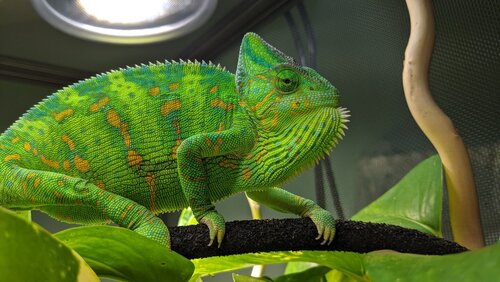Sharon12
Established Member
Etosha has been showing receptive colors since sept 23rd so about 3 weeks. Behavior pretty normal but last couple of days not much interested in crickets. Still goes after a silkworm or hornworm. 2 weeks ago I put a laying bin in as a permanent fixture. No interest in it but is exploring cage a bit. I have no idea what i should expect. I was hoping to avoid a clutch but what is standard for her age and hormonal state. Does she have eggs already? She is 7 months. Thank you. Lots of teal blue, orange dots and sometimes black stripes. She was recently to the vet. No sign of MBD and no parasites.





